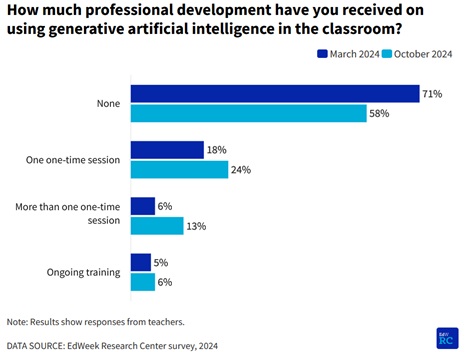 Martha Strever, a math teacher at Linden Avenue Middle School in Red Hook, N.Y. Flynn Larsen for Education Week.
Martha Strever, a math teacher at Linden Avenue Middle School in Red Hook, N.Y. Flynn Larsen for Education Week.
Dear Commons Community,
This posting is taken from an Education Week article.
When Martha Strever began teaching 63 years ago, the home computer did not exist and the first human had yet to walk on the moon.
There were 23 amendments to the constitution instead of the current 27, John F. Kennedy was president, and the civil rights March on Washington had not happened.
A lot has changed since 1961. But one constant is Linden Avenue Middle School’s math teacher.
Strever, now in her mid-80s, has been a fixture at the Red Hook, N.Y., school in the intervening 63 years, teaching thousands of students math—in some cases three generations of students from the same family—while navigating momentous changes in both the world around her and the education profession.
“I never could have imagined when I started some of the things we’d see and do in my career,” Strever said. “It has certainly been interesting.”
On Sept. 4, she began her 64th year of teaching, an incredible feat as districts contend with high levels of teacher burnout and turnover, with more than 40 percent of teachers leaving the profession in their first five years.
For Strever, it’s challenging work, just as it is for everyone else. But it’s also work that she’s molded her entire life around and that she’s as committed to as ever. She doesn’t plan to quit anytime soon.
“I can’t imagine doing anything else,” she said.
Strever had a love of teaching from a young age
Strever grew up in Hyde Park, about 20 minutes south of Red Hook.
When she was 7, Strever would sneak up to her parents’ room after school and stand in front of their full-length mirror, mimicking her favorite teachers.
She had already decided she wanted to follow in their footsteps.
It took Strever a few more years to figure out exactly what subject she wanted to teach, but once she dropped a high school social studies class midyear to make room for an additional math course, the answer was obvious—she was going to be a math teacher.
She received a few scholarships that made it possible for her to attend college, and she landed a student-teaching job at none other than Linden Avenue Middle School, about an hour south of Albany.
Strever was offered a full-time teaching job at the school after she completed her student-teaching stint. She took it despite attractive teaching job offers elsewhere.
In 1971, Strever became the first female department chair in the Red Hook district, overseeing math instruction, a position she held for 49 years, until the onset of the pandemic.
The biggest draw: The position allowed her to continue teaching.
Not being in the classroom “is a dealbreaker for me,” Strever said.
“There was another opportunity in another district, but it would have taken me out of the classroom, and that’s just where my heart is.”
Strever has taught multiple generations of students
Strever is well beyond teachers’ average retirement age of 59 and almost double the age of the average American educator (43).
In her career, she’s taught students after teaching their parents and their parents’ parents. Strever believes she’s also taught some more recent students’ great-grandparents.
She’s taught a district assistant superintendent, as well as a handful of other administrators, and at least one former school board member.
Stacie Fenn Smith took Strever’s math class 30 years ago, and remembers the teacher striking the right balance between strict and personable.
Fenn Smith remembers Strever as the type of teacher who expected students to show up prepared—she didn’t hand out spare pencils if someone showed up without one—and ready to spend the hour focused on their work.
But Strever also took the time to learn about her students and create a special bond with them, Fenn Smith said.
“She was very strict and serious as your teacher, but you also knew that that came from a place of wanting you to do well,” she said.
Fenn Smith is now the principal of Linden Avenue Middle School, where she is Strever’s boss.
In the decades since Fenn Smith was Strever’s student, Fenn Smith has worked alongside her as a teacher and assistant principal before taking the helm at the school in 2021. Over the years, she’s watched Strever evolve.
Early in her career, Strever taught advanced math classes, typically with students who needed less guidance to develop fundamental skills. In more recent years, Strever began co-teaching the math courses for students who need more help, working with students with disabilities and learning disorders, who often need more instruction and encouragement.
Christopher Wood, a special education teacher, has co-taught the higher-needs classes with Strever for the past four years. He said her structured disposition has “made a world of difference” for students because it provides routine, predictability, and clear expectations.
Her structure and “meticulousness” complement Wood’s more relaxed approach, he said.
The duo are quite different but somehow work in perfect tandem, Wood said, often finishing each other’s sentences or predicting what the other might need.
“It amazes me, the dedication she has to this profession and these kids, and all of the things she’s seen and done, but is still going strong,” Wood said. “It’s been really inspiring working with her.”
For Strever, once the strict teacher who pushed the highest-achieving students to new heights, said now focusing on helping struggling students find ways to excel “is the delight of my day, every day.”
For Strever, tackling new technology is a manageable challenge
In the 1970s, when personal computers came out, Strever had already been teaching for more than a decade. She didn’t really know anything about the technology but somehow later found herself tasked with training the school staff on how to use computers as they gained popularity.
Determined as ever, Strever spent hours with the staff at the local Radio Shack so she could lead the training.
“When I got my master’s degree in ‘66, these didn’t even exist,” Strever said.
That was the first time, but certainly not the last, when a new technology challenged Strever. There were also heated debates among educators about how calculators would affect children’s learning and academic progress, and the machines are now commonplace in American classrooms.
When Strever thinks about artificial intelligence, now the hot topic of education technology debates, she feels much like she did all those years ago about the calculator: “We all made a big deal about that and how it would ruin kids’ ability to think and problem-solve on their own, but it found its place, and I think AI is going to be the same.”
But when asked what has changed the most in education over the past 63 years, Strever said it’s students’ behavior and confidence.
There are far more disciplinary problems districtwide, she said, and fewer students truly believe in themselves and their abilities.
Research, surveys, and polls from recent years back her up.
In the classroom, this translates to students “not feeling as empowered to reach for the top goals,” Strever said.
“They’ll tell me it’s OK that they got a 65 on a test, and I say, ‘No it isn’t. I know you’ve got more. Give it to me,’” she said. “And when I push them, they start to do it.”
That belief in her students is what makes Strever so effective, Fenn Smith said.
“That idea that students know you believe they can do it, we know it is a huge marker for academic success, and you can certainly feel that in her classroom,” she said.
Strever’s career could break world records
On a hot Friday in August, Fenn Smith called Strever to talk about a potential recognition for her long teaching career. Strever picked up the phone, midway through staining the wishing well on her property. Yes, she was doing the job by herself.
In the summers, she mows her own lawn. In the winters, she shovels snow from the sidewalk.
This year, Fenn Smith recruited another staff member to help Strever set up her classroom, just to be safe. It’s not unusual to find Strever, who’s barely 5 feet tall, standing on a ladder to hang up a poster.
She’s quirky, too: There’s an “urban legend,” as Fenn Smith called it, that Strever has preplanned outfits for each day of the school year and doesn’t repeat attire. Strever said she recalls a former student who kept track of her outfits she wore by tallying them on the paper book cover of their math textbook.
It may have been true at one point, Strever said, but in recent years she’s occasionally had a repeat outfit, mostly because it’s difficult to find clothes that fit her petite frame. It is true, though, that Strever only wears dresses or skirts to school (and to do yard work). She wears pants just one day per year, on field day.
“Everybody knows when field day is just by my outfit,” Strever said.
Strever was an only child growing up, and never married or had children of her own. She has made her home at Linden Avenue Middle School.
“This is my family,” Strever said. “They’re so kind to me. This is where I want to be.”
So, it should come as no surprise that Strever has no plans to retire. And administrators want her to stay as long as she wants. It’s not out of loyalty or obligation to a longtime staff member, Fenn Smith said. It’s exactly the opposite: The staff and students benefit from Strever’s expertise, and she is highly respected.
When Strever speaks, people listen. When she teaches, students thrive.
“She sometimes worries if she should keep staying or if she might get pushed out eventually,” Fenn Smith said. “But I’ve told her: ‘I will not take your name off your board until you choose to take it off yourself.’”
Fenn Smith recently nominated Strever for two Guinness World Records, and the nominations are under review: longest teaching tenure in a single school and longest-tenured math teacher, both of which she appears to have beaten by several years. She is currently the longest-tenured teacher in New York state, according to state records, and among the longest-tenured in the United States.
Guinness World Records doesn’t officially track the record for individual countries, but some state teachers’ unions have said unofficially that a former social studies teacher from Florida who taught for 72 years likely holds that title.
Happy and healthy, and with no plans to retire, Strever could hold that title in due time, too.
Go for it, Martha!
Tony












